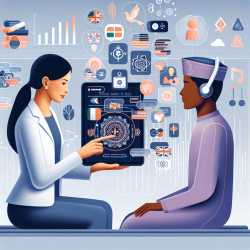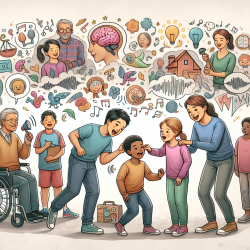Introduction
In the rapidly evolving field of speech-language pathology, practitioners are increasingly called upon to integrate cultural awareness into their therapeutic practices. The research article "Being Seen, Being Heard: Ownership of Archaeology and Digital Heritage" provides valuable insights into how digital heritage can inform and enhance our understanding of cultural narratives. This blog explores how these insights can be applied to improve outcomes in speech-language pathology, particularly for children in diverse cultural settings.
Understanding Digital Heritage
Digital heritage refers to the preservation and dissemination of cultural heritage through digital means. It encompasses a wide range of digital data, including oral traditions, artifacts, and historical narratives. This digital transformation allows for broader access and engagement with cultural heritage, but it also raises questions about ownership, representation, and inclusivity.
Key Insights from the Research
The research highlights several critical issues surrounding digital heritage:
- Power Asymmetries: Digital heritage often reflects existing power structures, potentially marginalizing Indigenous and racialized communities.
- Community Participation: Effective digital heritage projects require active involvement from the communities they represent.
- Ethical Considerations: Ethical practices are crucial in the curation and dissemination of digital heritage, ensuring respect and accuracy in representation.
Implications for Speech-Language Pathology
As speech-language pathologists, integrating these insights into our practice can significantly enhance our cultural competence and improve therapeutic outcomes. Here are some ways to apply these findings:
- Cultural Competence: Understanding the cultural narratives and histories of the communities we serve can lead to more effective and empathetic therapy sessions.
- Inclusive Practices: Incorporating digital heritage resources can help create more inclusive therapy environments, where diverse cultural backgrounds are acknowledged and respected.
- Community Engagement: Collaborating with community members in the development of therapy materials ensures that cultural nuances are accurately represented and respected.
Encouraging Further Research
While the integration of digital heritage into speech-language pathology holds promise, further research is needed to explore its full potential. Practitioners are encouraged to engage with ongoing research and contribute to the development of culturally informed therapeutic practices.
Conclusion
By leveraging the insights from "Being Seen, Being Heard: Ownership of Archaeology and Digital Heritage," speech-language pathologists can enhance their practice, fostering better outcomes for children from diverse cultural backgrounds. Embracing digital heritage not only enriches our understanding but also empowers the communities we serve.
To read the original research paper, please follow this link: Being Seen, Being Heard: Ownership of Archaeology and Digital Heritage.










